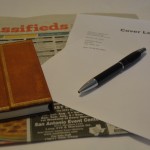Resume Writing 101
 Your resume is like a marketing brochure just for you and therefore it is one of the most important documents that you will create in your career.
Your resume is like a marketing brochure just for you and therefore it is one of the most important documents that you will create in your career.
There are lots of templates and formats and things to consider so this post is the 101 or basics of creating a high impact resume.
Key Tips
Insert your name and contact details as a header or footer – when your resume is printed in hard copy that will make sure that it is easy to correctly collate your information.
Make sure that you use the same font size and text style all the way through – with the exception of headings of course – to make the document flow and be easy to read
Format your document so there is a good amount of “white space” as this will make it easy to read whether on screen or on paper
Resume Styles
Chronological
Most resumes are in chronological (or date) order by role with the most recent role listed first and the oldest one last. This works well when you have a good amount of experience. Typically the resume will include, for each role,
Job Title, Company, month and year started – month and year finished
Followed by key responsibilities and achievements
Be careful about how far back you go with your roles – for those of us who have been working for over 20 years we don’t want to be sharing out of date experience.
Functional
People who have changed roles more often than they are comfortable with OR who want to change career OR who have limited experience may choose a Functional format for their resume.
The functional format focuses on listing up to 6 capability or skill areas supported by examples of where those capabilities have been displayed. The emphasis is on the skill outcome rather than the company and role that has been held. Typically this would look like:
Capability Area, examples of experiences and outcomes. Then after the capability areas a list of companies where this experience has been gained in the format of Job Title, Company, start and finish month/year.
Content Format
The following is a sequential list of what sections to include in your resume.
- Career Objective
- Key Attributes (if using the Functional style) or Key Capabilities (if using Chronological style)
- Experience
- Qualifications
- References Supplied on Request
Some roles will specifically request information, such as listing your references in which case include them.
Describe your experiences in the STAR format rather than listing the tasks or responsibilities. For key achievements and outcomes that you are proud of describe them in terms of the Situation that existed, the Task that you were responsible for delivering, the Action you took (which may be well within your role or at times beyond it for the right reason) and the Result that was achieved.
If you have found this information useful, please feel free to share the blog with others or contact me with your feedback.
As an experienced career coach and someone who has changed roles in my own corporate career, I’ve written and read many resumes.
